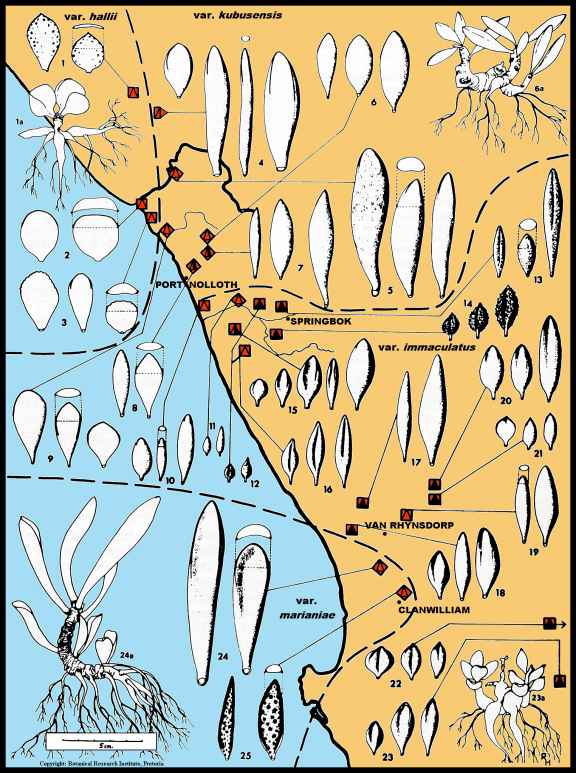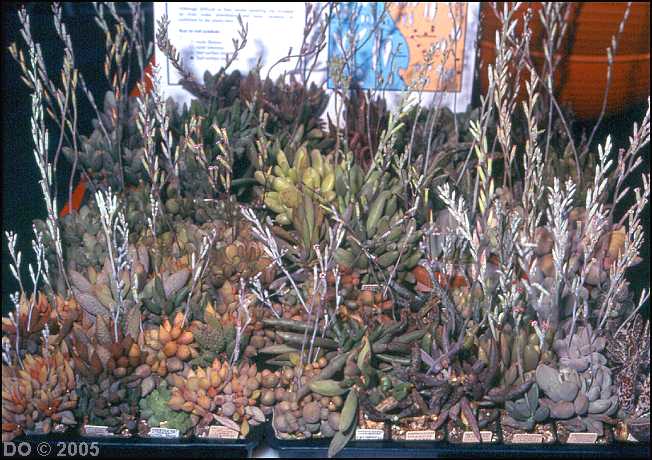| ADROMISCHUS
MARIANIAE VARIATION The map below is scanned
from the Flora of
Southern Africa (FSA), Crassulaceae, Vol. 14 (1985) by H.
R. Tölken. I coloured and aligned it with
Tölken's caption, as supporting material for a
collection of A. marianiae forms
exhibited at the BCSS National Show at Spalding
in August 2004. It illustrates the division of
this species into four varieties plotted against
the Atlantic coast-line. Tölken (1978) wrote:
"A.
marianiae is an extremely
variable species, occurring from near
Clanwilliam to just north of the Orange
River. Recent collections show a continuous
range of variation, leading to distinct
extreme forms in isolated localities. After
considerable field studies, it was found that
most of the transitional ranges between
extreme forms are restricted to areas where
taxa apparently come into close contact with
one another. As whole ranges of variation are
found within these areas, introgressive
hybridization is considered to be taking
place. The map shows a selection of the full
range of variation and the geographic
distribution of certain characteristics, but
it also illustrates why certain species have
been relegated to synonymy as four
varieties."
Since then, more sampling
over a wider area has revealed even greater
variation, supporting the nine taxa recognised
in this web site. For example, "hallii"
with broad leaves is quite widespread on white
quartzite outcrops. Click here to see how variable a single A.
marianiae population can be.
Variation in shape, size
& surface texture of leaves and the type of
roots is shown. Samples with a smooth leaf
surface have open triangles, with solid triangles
for a verrucose leaf surface. Samples with
tuberous roots are in squares, with fibrous roots
in diamonds.


These are all forms of the variable A. marianiae complex, in 5 or 7 cm. sq. pots.
Third prize, class 122, thematic exhibit up to 24" square, BCSS National Show
2004. Photo: David Offord.
|